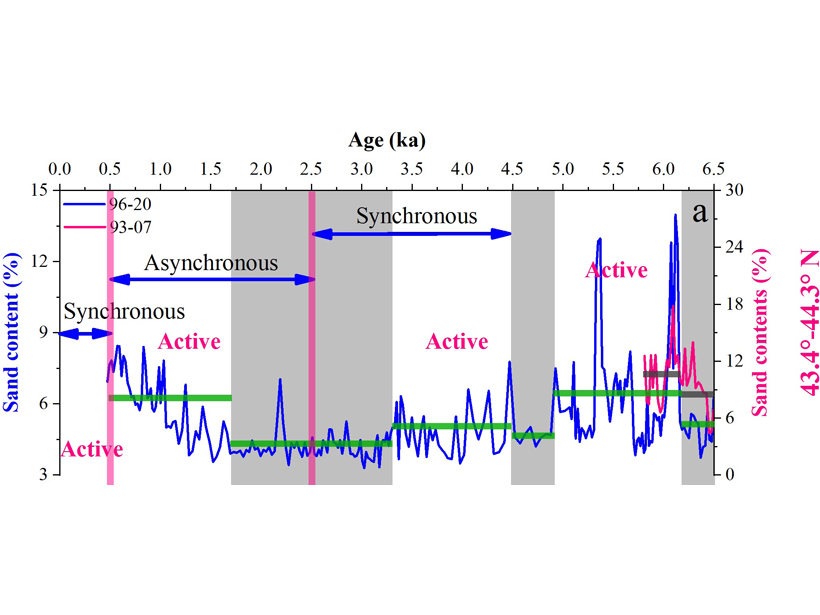Source: Geophysical Research Letters
Storm activity, including hurricanes, in the Atlantic Ocean has an outsized influence on the economic production and societal well-being of the hundreds of millions of people who live along the north American shorelines that are vulnerable to storm damage. Major storm events are expected to become stronger and occur more often in a warming climate. Yang et al. [2020] show that we might also expect shifts in the preferential pathways of the storm activity between low- and mid-latitudes.
A new 6500-year record on storm activity in the mid-latitude is reconstructed from two sediment cores collected in eastern Canada. This record, combined with other paleo-storm records from low and mid latitudes along the eastern American seaboard, shows that peaks in storminess can be similar across all latitudes for thousands of years before abrupt climate shifts cause the peaks in storm activity to be out of phase between the low- and mid-latitudes. The latitudinal response shows a strong correspondence to changes in the strength of the Atlantic Meridional Overturning Circulation (AMOC) which is known to influence sea surface temperature patterns and hence storm activity. A sustained increase in AMOC is associated with a synchronous storm pattern in the Atlantic, and vice-versa.
The study may encourage development of better strategies for management risk in vulnerable coastal areas at different latitudes, as well as provides food for thought about how other climate phenomena might vary geographically in a warming world.
Citation: Yang, Y., Maselli, V., Normandeau, A., Piper, D. J. W., Li, M. Z., Campbell, D. C., et al. [2020]. Latitudinal response of storm activity to abrupt climate change during the last 6,500 years. Geophysical Research Letters, 47, e2020GL089859. https://doi.org/10.1029/2020GL089859
―Janet Sprintall, Editor, Geophysical Research Letters
Text © 2020. The authors. CC BY-NC-ND 3.0
Except where otherwise noted, images are subject to copyright. Any reuse without express permission from the copyright owner is prohibited.

